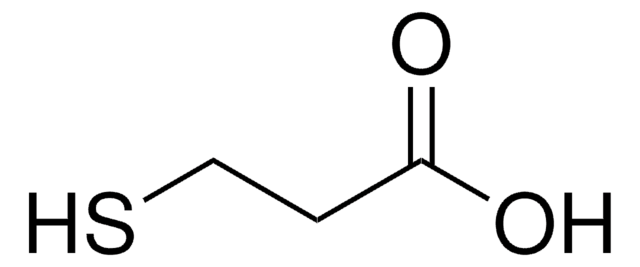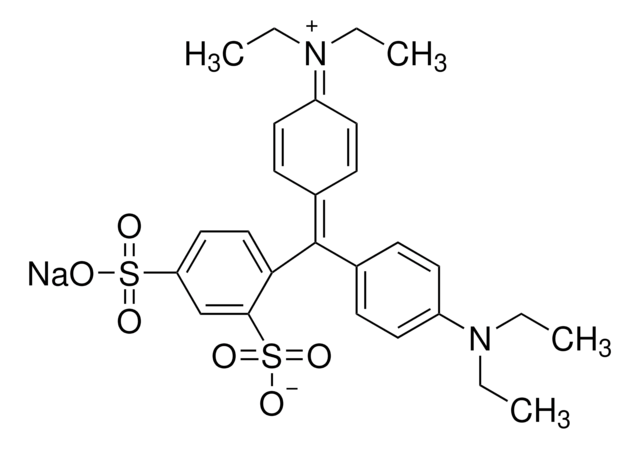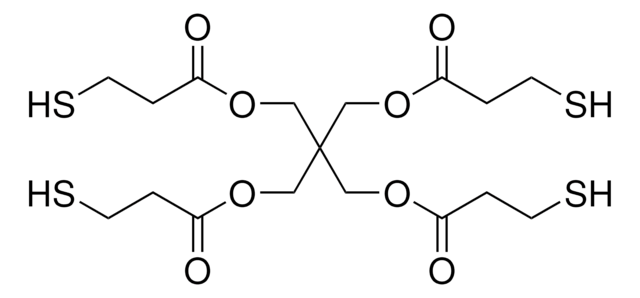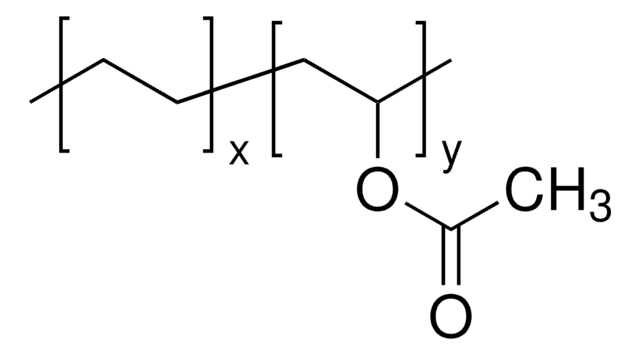Wszystkie zdjęcia(3)
Kluczowe dokumenty
448303
16-Mercaptohexadecanoic acid
90%
Synonim(y):
MHDA
Zaloguj sięWyświetlanie cen organizacyjnych i kontraktowych
About This Item
Wzór liniowy:
HS(CH2)15CO2H
Numer CAS:
Masa cząsteczkowa:
288.49
Numer MDL:
Kod UNSPSC:
12352103
Identyfikator substancji w PubChem:
NACRES:
NA.23
Polecane produkty
Poziom jakości
Próba
90%
Formularz
solid
mp
65-69 °C
ciąg SMILES
OC(=O)CCCCCCCCCCCCCCCS
InChI
1S/C16H32O2S/c17-16(18)14-12-10-8-6-4-2-1-3-5-7-9-11-13-15-19/h19H,1-15H2,(H,17,18)
Klucz InChI
INOAASCWQMFJQA-UHFFFAOYSA-N
Szukasz podobnych produktów? Odwiedź Przewodnik dotyczący porównywania produktów
Opis ogólny
16-Mercaptohexadecanoic acid (MHA) is a long chained alkanethiol which forms self-assembled monolayers (SAMs) on a variety of surfaces.
Zastosowanie
MHA forms SAMs on gold dipyramids which can be used in the fabrication of nanoresonators for shell-isolated nanoparticle enhanced raman spectroscopy (SHINERS). It can also be used to surface modify gold electrodes that can be used for sensitive detection of clozapine. Gold surfaces can be self-assembled with MHA by polymer pen lithography (PPL) which can be potentially used in bioengineering.
Ta strona może zawierać tekst przetłumaczony maszynowo.
Kod klasy składowania
11 - Combustible Solids
Klasa zagrożenia wodnego (WGK)
WGK 3
Temperatura zapłonu (°F)
Not applicable
Temperatura zapłonu (°C)
Not applicable
Środki ochrony indywidualnej
Eyeshields, Gloves, type N95 (US)
Wybierz jedną z najnowszych wersji:
Masz już ten produkt?
Dokumenty związane z niedawno zakupionymi produktami zostały zamieszczone w Bibliotece dokumentów.
Klienci oglądali również te produkty
Large-area molecular patterning with polymer pen lithography.
Eichelsdoerfer DJ, et al.
Nature Protocols, 8(12), 2548-2548 (2013)
Landon J Brower et al.
Beilstein journal of nanotechnology, 8, 2307-2314 (2017-11-29)
Integration of surface-anchored metal-organic frameworks (surMOFs) within hierarchical architectures is necessary for potential sensing, electronic, optical, or separation applications. It is important to understand the fundamentals of film formation for these surMOFs in order to develop strategies for their incorporation
Andreas Mark et al.
Small (Weinheim an der Bergstrasse, Germany), 15(43), e1902976-e1902976 (2019-09-24)
The colloidal probe technique, which is based on the atomic force microscope, revolutionizes direct force measurements in many fields, such as interface science or biomechanics. It allows for the first time to determine interaction forces on the single particle or
Brandon H Bowser et al.
Nanomaterials (Basel, Switzerland), 8(9) (2018-08-26)
Metal-organic frameworks (MOFs) are extremely porous, crystalline materials with high surface area for potential use in gas storage, sequestration, and separations. Toward incorporation into structures for these applications, this study compares three variations of surface-bound and free-standing HKUST-1 MOF structures:
Sensitive detection of clozapine using a gold electrode modified with 16-mercaptohexadecanoic acid self-assembled monolayer.
Huang Fei, et al.
Talanta, 72(2), 457-462 (2007)
Nasz zespół naukowców ma doświadczenie we wszystkich obszarach badań, w tym w naukach przyrodniczych, materiałoznawstwie, syntezie chemicznej, chromatografii, analityce i wielu innych dziedzinach.
Skontaktuj się z zespołem ds. pomocy technicznej













